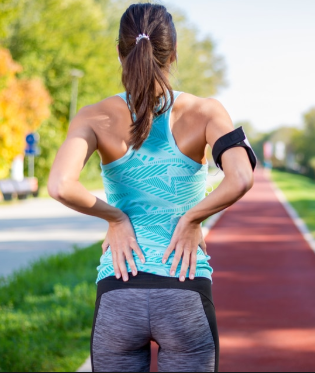Running and Back Pain
One of the more frequent complaints I hear from runners is back pain after a run. There may be many sources of this pain, but the first thing I’ll assess are the hip flexors.
Tight, or shortened hip flexors can cause issues in both running and walking. Whatever a muscle does (hip flexion in this case), limits the opposite motion (hip extension). This is hip extension:
Both walking and more so running, require a fair amount of hip extension. So if the hip flexors are not allowing for adequate range of motion, the body will find it somewhere. The hip flexors are a group of muscles that originate on the sides of the vertebrae so as the leg extends back, and the hip flexors run out of laxity, it will pull forward on your vertebrae. This can be even worse if only one side is tight, because now it will also put a rotational force on the vertebrae.
The iliopsoas muscles are the hip flexors. Note the attachment to the side of the vertebrae
There is another muscle, rectus femoris, that is considered a weak hip flexor. This muscle starts from the top of your pelvis and attaches below your knee cap; it’s a two joint muscle. This one can also be problematic if one side is more restricted than the other and can lead to SI dysfunction (sacroiliac) which will also mimic back pain.
Usually a combination of manual techniques similar to massage, and lengthening these muscles will resolve the issue. It will also be necessary to strengthen the core to prevent too much movement of the vertebrae or SI joint. Also, it will be important to learn how to extend the hip without creating too much of an arch in your lower back.
Questions? Or do you want me to blog on a specific topic? Email me at: drchris@dpt.services



